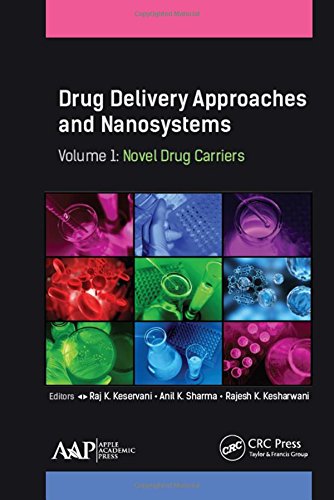

Most ebook files are in PDF format, so you can easily read them using various software such as Foxit Reader or directly on the Google Chrome browser.
Some ebook files are released by publishers in other formats such as .awz, .mobi, .epub, .fb2, etc. You may need to install specific software to read these formats on mobile/PC, such as Calibre.
Please read the tutorial at this link. https://ebooknice.com/page/post?id=faq
We offer FREE conversion to the popular formats you request; however, this may take some time. Therefore, right after payment, please email us, and we will try to provide the service as quickly as possible.
For some exceptional file formats or broken links (if any), please refrain from opening any disputes. Instead, email us first, and we will try to assist within a maximum of 6 hours.
EbookNice Team

Status:
Available4.6
19 reviewsThis volume, the first of the two-volume Drug Delivery Approaches and Nanosystems series,presents a full picture of the state-of-the-art research and development in drug delivery systems using nanotechnology and its applications. It addresses the ever-expanding application of nanotechnology or nano-sized materials in the medical field and the real-world challenges and complexities of current drug delivery methodologies and techniques.
Many methods of drug delivery systems have been used, but very few of them have been validated for medical use. A major reason for the above situation, the editors believe, is the gap between academia and research, and the gap between academic research and real-time clinical applications and needs. This volume addresses that gap.
This volume presents 12 chapters that provide information about the preparation and characterization of nanocomposite materials used in drug delivery systems; advanced research of carbon nanotubes, nanocomposite materials, and polymer-clay, ceramics, and silicate glass-based nanocomposites; and the functionality of graphene nanocomposites. The book also provides detailed information on the application of nanotechnology in drug delivery systems in health care systems and medicine. The book describes how nanostructures are synthesized and draws attention to wide variety of nanostructures available for biological research and treatment applications.
This valuable volume provides a wealth of information that will be valuable to scientists and researchers, faculty, and students.
Volume 2 of the two-volume series is subtitled Drug Targeting Aspects of Nanotechnology. The volumes are available separately or as a set.